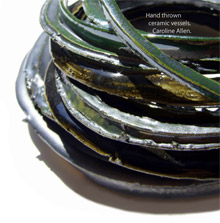Rachel Faulkner-Jones, Dr Madga Midgley, Prof Ian Ralston (University of Edinbugh)
Metallic depositions in Scotland make up the bulk of the Bronze Age archaeological record, due in part to the relatively poor survival rate of other archaeological features such as settlements, and are the most visible (and, accordingly, studied) remnants of this period. There is a clear distinction between artefacts buried in funerary contexts, whether inhumation or cremation, and artefacts buried alone or in hoards with no associated human remains. It is the aim of this paper to investigate some of the patterns behind the non-funerary depositions in Scotland, a country that has yet to be fully integrated into our understanding of the European Bronze Age, and in turn infer the creative processes which are fundamental in determining where and why a specific artefact is deposited. Of primary interest are the differences in deposition across various landscapes, which in turn informs on the possible cosmologies underlying Bronze Age depositions. There is not a simple distinction between water and dry land deposition, but rather, distinctions between artefacts found in rivers, marshes and the sea; furthermore, as the Bronze Age progressed, land-use and deposition patterns changed as cosmologies mutated and evolved. Given the changes in subsistence patterns throughout the Bronze Age, as land was divided into individual farming areas and more difficult terrain was drained and cultivated, corresponding changes in non-votive depositions are not only to be expected, but can be used to understand how Bronze Age peoples conceptualised and responded to the changing world in which they lived.


